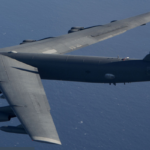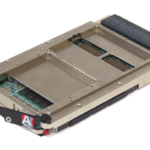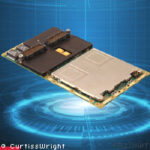These two military-focused architectural standards provide approaches to system-level development and sensor-centric designs.
The previous part of this article discussed the Modular Open Systems Approach (MOSA) Reference Frameworks in Defense Acquisition Programs. This part looks at one realization via the Sensor Open Systems Architecture (SOSA).
Q: What is SOSA, anyway?
A: (Warning: there’s a lot of bureaucratic-speak and cliches in the official statements) The SOSA approach establishes guidelines for Command, Control, Communications, Computers, Cyber, Intelligence, Surveillance, and Reconnaissance (C5ISR) systems. The objective is to allow flexibility in selecting and acquiring sensors and subsystems that provide sensor data collection, processing, exploitation, communication, and related functions over the full life cycle of the C5ISR system (Figure 1).

Q: Can you say more about it?
A: SOSA defines itself as “an integrative and inclusive standard to accelerate the development of affordable, agile, and composable sensor systems.” Its goal is to leverage existing open standards under the MOSA initiative to speed development while using common interfaces and packaging to the extent possible. The primary goal of the SOSA Consortium is to help provide the Department of Defense (DoD) with common, cost-effective, commercial-off-the-shelf (COTS) sensor technologies that can be easily and quickly integrated, repaired or replaced, rather than with vendor-controlled or vendor-locked system designs.
Q: Who “manages” SOSA?
A: The SOSA standard is managed by The Open Group SOSA Consortium. Their mission statement says, “The goal of The Open Group SOSA Consortium is to develop open architecture at the right level for Communications (Comms), Electro-Optical/Infra-Red (EO/IR), Electronic Warfare (EW), Radar, and Signals Intelligence (SIGINT) systems. The open architecture supports airborne, subsurface, surface, ground, and space. The SOSA Consortium strives to develop an ecosystem that allows interoperability, reuse, and faster delivery of products to market through vertical integration from cables, mechanical interfaces, hardware, software, and system designs.”
Q: What’s the background of this consortium?
A: The consortium’s organizational structure consists of an advisory board, steering committee, architecture standing committee, conformance standing committee, as well as a Business Working Group and Technical Working Group. The SOSA Consortium is a collaborative effort between government, industry, and academia that provides a forum through which SOSA Consortium members can work together on an open sensor standard designed to benefit all involved parties and balance stakeholder interests. Members include major defense contractors, businesses, and research institutes; the Air Force, Army, Navy, and other government agencies also participate in the consortium.
Q: Wait, what’s this thing called the “Open Group”?
A: In early 2017, the DoD issued a solicitation for Sensor Open System Architecture (SOSA) Architectural Research, which led to the formation of the SOSA Consortium managed by The Open Group. The Open Group is a global consortium dedicated to documenting, tracking, and integrating current and emerging technology standards and requirements. The Open Group states that the SOSA Consortium is a collaborative effort between government, industry, and academia that provides a forum through which SOSA Consortium members can work together on an open sensor standard designed to benefit all involved parties and balance stakeholder interests.
Q: What is SOSA’s initial project and objective?
A: The SOSA Technical Standard that documents the SOSA Architecture defines a modular system structure, which will have close integration within modules for providing functionality and behaviors, along with well-defined interfaces.
Q: What has the SOSA consortium defined as the attribute they strive for?
A: They have established ten such attributes: interoperability; securability; modularity; compatibility; portability; plug-and-playability; upgradeability; scalability in sensor multiplicity; scalability in platform size; and resiliency.
One of the obvious issues is the well-known engineering dilemma of balancing these frequently competing objectives. For instance, while fully defined backplane interfaces enable high levels of portability, over-constraining interconnects can lead to a lack of flexibility and potentially add extra cost. Striking the right balance is one of the objectives of the SOSA Consortium.
Q: What are the primary targeted application areas for SOSA?
A: Radar processing is one of the target applications for SOSA, but it is also focused on communications, electronic warfare (EW), electro-optical/infra-red (EO/IR), and signal intelligence (SIGINT) applications, as well as multi-INT sensor systems which combine two or more of these sensor types. It’s a complicated arrangement (Figure 2).

The key is that the module has well-defined boundaries, is severable, and has well-defined functionality. Modules are essential to enabling systems to be more easily upgradeable for new technology or alternate functions. To accommodate the multiple use cases.
Q: How does all this translate to actual deliverable hardware?
A: At the hardware module level, there are four primary plug-in card profile types:
- I/O-Intensive Profile – for single-board computers with external I/O support. For a sensor system, these modules support XMC (VITA 42) mezzanine expansion cards, are intended for command-and-control functionality, and are the only modules that handle external I/O.
- Payload Profile – This is the primary “workhorse” profile and contains the modules that handle the sensor interfaces and the bulk of the sensor processing. This profile can support FPGA modules with RF or optical interfaces but can also support compute-intensive processor modules or GPGPU modules.
- Switch Profile – This is the profile for the network switches within the system and is key for scaling to larger systems.
- Timing Card Profile – Timing distribution is a key function within a sensor system, and this profile standardizes the I/O of the timing module.
Q: Is there a “sticker” that vendors can use to indicate any SOSA compliance?
A: Yes and no. Until the SOSA standard was approved in late 2021, all of its evolving iterations were called snapshots, and vendors tried to meet the spirit of these snapshots. However, as there was no official standard; products could not be called SOSA-compliant or SOSA-conformant. Instead, the industry adopted the term “SOSA-aligned.”
Even so, it’s a little early for vendors to claim their products. It is compliant or conformant to SOSA. That’s because compliance testing needs to be in place to ensure that products meet the SOSA specifications and that testing is being worked on through 2022. When that is approved, companies be able to put a SOSA-conformant or SOSA-compliant sticker on their products.
Q: How will we know if all this is actually working?
A: The SOSA initiative attempts to enable a well-defined architecture of building blocks that will facilitate modularized functions while using modules provided by the COTS marketplace. If successful, the industry’s ability to keep sensor-processing systems current and easily upgradeable will be markedly improved.
At the same time, it will attempt to resolve the standardization versus differentiation dilemma. It will do so by enabling easier substitution of competitors’ products while still offering the opportunity to differentiate in the areas of ruggedization, the longevity of supply, enhanced security, and other capabilities that go beyond what is defined by the architecture.
Q: Will SOSA and MOSA succeed?
A: Obviously, we don’t know. It has a lot of important factors behind it, starting with its callout by the National Defense Authorization Act requiring implementation of MOSA, and the fact that the concept appears to make sense. Still, even ideas that are sensible in principle can get bogged down in the realities of implementation and execution. The complexity of MOSA and SOSA and the systems they support may become an impenetrable, delaying thicket. Only time will tell, as the cliché goes.
EE World Related Content
MOSA
- Module speeds security integration of OpenVPX MOSA-based systems
- Distributed, ruggedized computing modules target defense apps
- 3U/6U OpenVPX computer boards, peripherals, ATR-style chassis target defense apps
- Raspberry Pi-based computer meets mil standards for defense and aerospace apps
- Rugged 3U OpenVPX processor module provides hardware-accelerated graphics
- Mission computer sports 6th gen Intel atom MCU for deterministic Ethernet networking
SOSA
- Development kit covers SOSA aligned chassis management
- SOSA-aligned powerPC SBC handles real-time data processing in military/defense apps
- 3U development platform handles SOSA 1.0 and CMOSS designs
- 6U tall 19” rack mount chassis designed for 3U Open VPX and SOSA aligned boards
- MIL rugged rackmount SOSA-aligned chassis features advanced cooling
- TE Connectivity’s interconnect solutions align with SOSA Consortium technical standard
- 3U, 6U VPX boards follow SOSA technical standard
- Graphic output boards aligned with VITA 65, SOSA technical standards
- SOSA-aligned 3U VPX processor blade carries 11th-generation Intel Core i7
- 3U VPX FPGA board aligns with SOSA technical standard
- Single-phase 85-264-Vac input/28-Vdc output supply module meets SOSA standard
- 3U VPX Ethernet switch meets SOSA technical standard
External References
Historical and standards-related
- Boeing, “Historical Snapshot: B-52 Stratofortress”
- Boeing B-52 Stratofortress Association, “The Story of the Boeing B-52 Stratofortress”
- The Wall Street Journal, “S. Pushes to Keep B-52 Bombers Going as Pressure From China Grows” (Oct. 17, 2022)
- The Wall Street Journal, “For Wars of the Future, Pentagon Looks to Distant Past: The B-52” (Jan. 24, 2021)
- Military & Aerospace Electronics, “Parts obsolescence forces redesign and remanufacture of AN/ASK-7 data-transfer avionics for B-52 bomber”
- Wikipedia, “MIL-STD-1553”
- Department of Defense, May 2020, “Modular Open Systems Approach (MOSA) Reference Frameworks in Defense Acquisition Programs”
MOSA
- Curtiss-Wright, “Modular Open Systems Approach (MOSA) Solutions”
- Trenton Systems, “Cost-effective, MOSA-aligned compute solutions for US DoD and Allies”
- Practical Software & Systems Measurement, “Modular Open Systems Approach (MOSA)”
- Mobility Engineering, “Designing Rugged SWaP-Optimized MOSA Solutions for UUVs”
- Mobility Engineering, “MOSA Enclosure Design for Military Systems”
- Mobility Engineering, “What System Designers Should Know About MOSA Standards”
SOSA
- The Open Group SOSA™ Consortium
- Mobility Engineering, “The Inside Story – SOSA: Sensor Open Systems Architecture”
- VITA Technologies, “Sensor Open Systems Architecture (SOSA): Enabling the next generation of flexible and adaptable radar systems”
- Military Embedded Systems, “Sensor Open Systems Architecture (SOSA): Enabling the next generation of flexible and adaptable radar systems”
- Military Embedded Systems, “Leveraging the Sensor Open Systems Architecture (SOSA) for radar applications”
- Military-Aerospace Electronics, “The official Sensor Open Systems Architecture (SOSA) standard is out; so now what?”
- Military-Aerospace Electronics, “At long last, SOSA open-systems standards guidelines officially released; now comes compliance testing”




